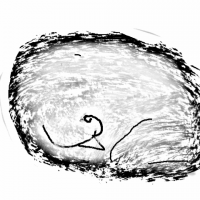lighting query
 HelenAA
🖼️ 19 images Mapmaker
HelenAA
🖼️ 19 images Mapmaker
Hi, I've got a question - is there a way to change the colour of the wall shadows apart from using the Point Directional settings? Despite all the help I've had from Monsen I find that it's incredibly difficult to set up in a Modern floorplan. It's not essential as my floorplans are only for my own reference when working my way through a novel I'm writing.
Helen
Helen


Comments
Here's the ground floor with me using Wall Shadow for the lights.
For adding colored shadows....create a sheet and pick solid fill and color you want. Then use the smooth poly tool. I always make shadow slightly larger than I want for edge fading.
In CC3's light model, the entities on a sheet are the outline of the foam blocks with each "Wall Shadow, Point Light Setup" effect setting the height for the blocks for that sheet. Each point light setup accumulates the blocks for that sheet onto the table and the "Wall Shadow, Point Light Finalize" effect uses the lights created by the ADDLIGHT command to determine what parts are visible and (if applicable) how bright the shadows are at each point.
In computer terms, each point light setup effect accumulates the current sheet state into a heightfield that has the lighting solution computed via raycasting in the point light finalize effect.
Generally, the point light setup effect should be on the sheet to ensure the cleanest possible light blockers. Putting it later on the list can result in oversized light blockers because effects can cause the opacity channel of the image to spread. If the light ends up inside a non-transparent area due to spreading of an earlier effect on the sheet, then the light will likely have no effect (that is, what should be lighted will just be the shadow color).
The Wall Shadow effect uses the image data for a sheet to compute a shadow at exactly 45 degrees (it shares a heritage with the Bevel effect in terms of how it computes its angles; both get some odd folding effects for general drawings). The Wall Shadow, Directional effect, in contrast, uses the image data to compute a shadow in the direction specified and it doesn't have any of the artifacts or special angles associated with the basic Wall Shadow filter (again, similar to the difference between the Bevel and Bevel, Lighted effects).
As Zedee suggests, some folks use semi-transparent dark polygons to get shadows. Others go for a basic ambient lighting effect by using the Glow effect (or the Outer Glow effect) with a dark color to get the sort of ambient occlusion that would be visible if you sliced the top off of a building and looked straight down.
This forum is packed full of helpful people.
As an aside, the command line things to add directional light are a bit inconsistent aren't they? I mean you've got LIGHTSHOW, LIGHTHIDE but it's ADDLIGHT !
Not sure about the shadows on the furniture though.